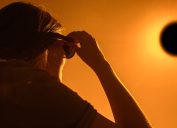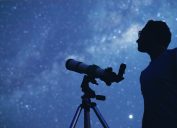What Really Happens to Your Eyes If You Look Directly at a Solar Eclipse
Here's how to view April's solar eclipse safely, NASA says.
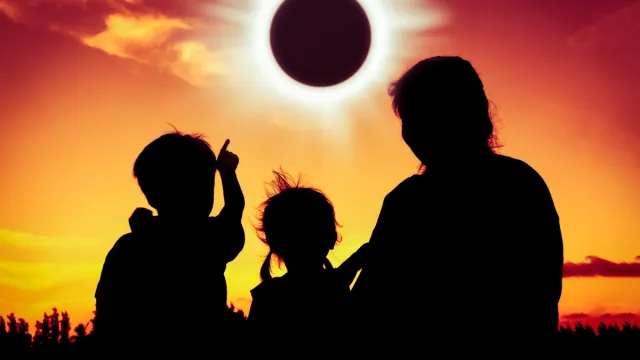
On April 8, 2024, a rare celestial event is poised to take place: a total solar eclipse. This occurs when the moon passes between the Earth and the sun, casting the moon's shadow onto the Earth and blocking the sun's light. If you're located within the path of totality–the area in which the total solar eclipse is visible—this can be quite the spectacle. Yet experts say it's essential that you don't look directly at the eclipse, since it can have a harmful effect on your eyesight. Wondering what happens if you do look directly at a total solar eclipse? Here's why you should never try it, according to NASA and other astronomical experts.
RELATED: 8 Best Destinations for the Next (and Rare) Total Solar Eclipse.
What Happens If You Look at a Solar Eclipse
Can a solar eclipse blind you?
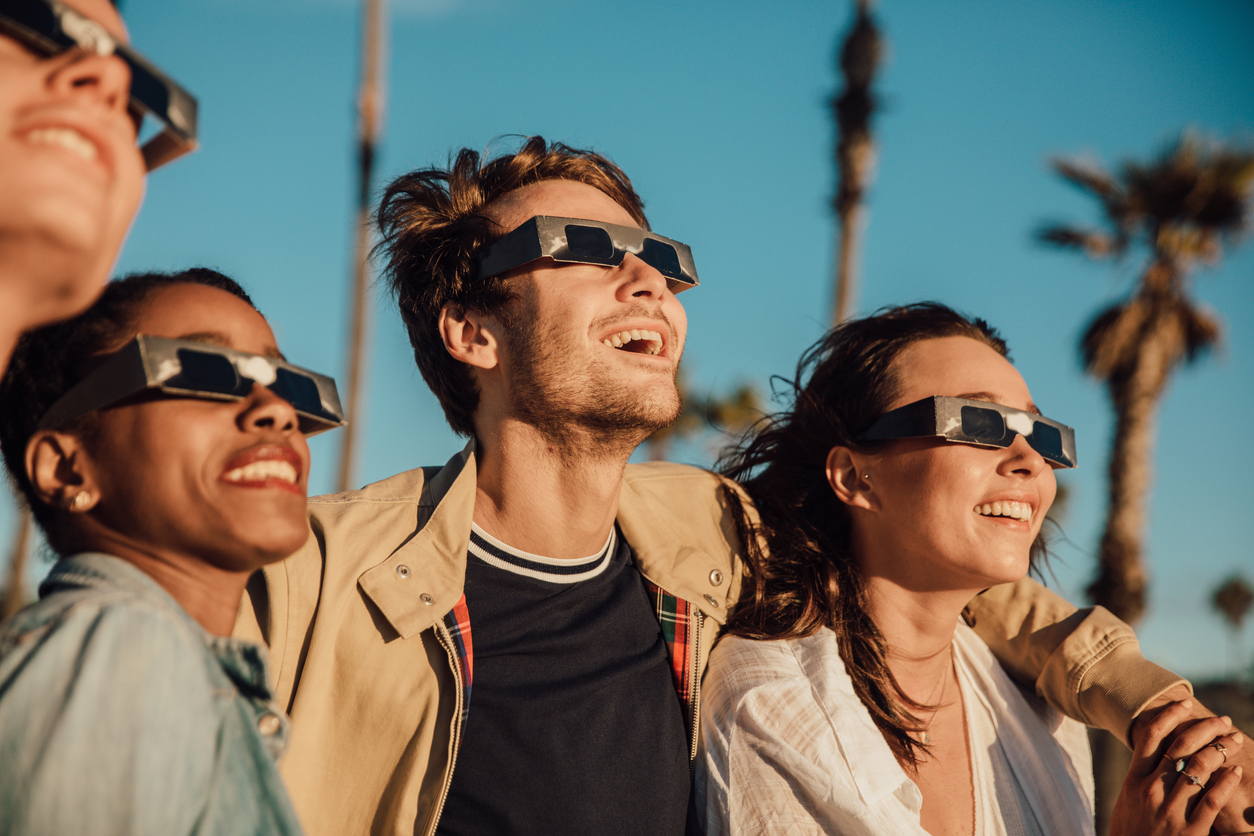
You may have heard the claim that looking directly at a solar eclipse can blind you—and unfortunately, experts confirm that this is true. According to the National Aeronautics and Space Administration (NASA), looking at the Sun during a solar eclipse can cause serious damage to the retinas.
"Except during the brief total phase of a total solar eclipse, when the Moon completely blocks the Sun's bright face, it is not safe to look directly at the Sun without specialized eye protection for solar viewing," the government agency says. "Viewing any part of the bright Sun through a camera lens, binoculars, or a telescope without a special-purpose solar filter secured over the front of the optics will instantly cause severe eye injury."
Regular sunglasses will not protect your eyes.
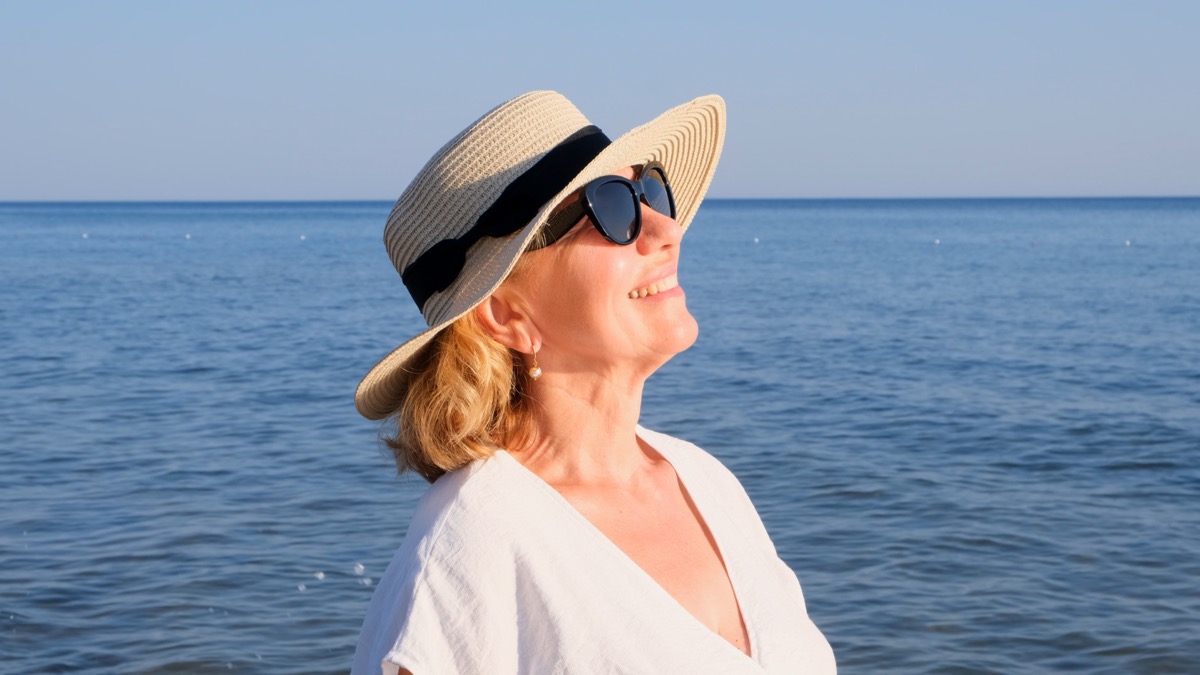
If you do plan to witness it in person, it's important to know how to view a solar eclipse safely. You can do this by planning ahead and finding adequately protective eyewear.
"Eclipse glasses are NOT regular sunglasses; regular sunglasses, no matter how dark, are not safe for viewing the Sun," explains NASA. "Safe solar viewers are thousands of times darker and ought to comply with the ISO 12312-2 international standard."
The American Astronomical Society warns that during the last total solar eclipse in Aug. 2017, "the marketplace was flooded by counterfeit eclipse glasses that were labeled as ISO-compliant when in fact they had not been properly tested and shown to be safe."
They now recommend purchasing eclipse viewers from pre-vetted suppliers listed on their Suppliers of Safe Solar Filters & Viewers page.
NASA adds that if your glasses are "torn, scratched, or otherwise damaged," you should replace them with an undamaged pair. "Always supervise children using solar viewers," they add.
RELATED: Southwest Says You Can View the Total Solar Eclipse on These 8 Flights.
Even a briefly unprotected glance at the sun can damage your eyes.

You may be wondering—can you glance at a solar eclipse quickly without suffering any retinal damage? Experts say you shouldn't take the chance, since the sun's rays can cause eye injury almost immediately.
When the sun does cause a retinal burn, killing the cells in your retina, you're unlikely to feel any pain. It can take several hours or days before the symptoms set in, and by that point, it's possible to have permanent vision loss.
There are a few ways to watch the eclipse without glasses.

There are a handful of ways to watch the total solar eclipse without protective glasses. The first is to look through a handheld solar viewer, camera, or telescope—but these would need to be protected with a special Sun-safe filtering lens.
"If you don't have eclipse glasses or a handheld solar viewer, you can use an indirect viewing method, which does not involve looking directly at the Sun," NASA notes. "One way is to use a pinhole projector, which has a small opening (for example, a hole punched in an index card) and projects an image of the Sun onto a nearby surface. With the Sun at your back, you can then safely view the projected image. Do NOT look at the Sun through the pinhole!"
For more safety tips sent directly to your inbox, sign up for our daily newsletter.
- Source: NASA: Total Solar Eclipse Safety


